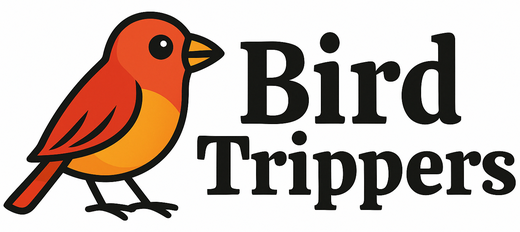Birds with Big Beaks: Names and Where You Can Find Them
Dive into the fascinating world of birds with remarkably big beaks! From the vibrant Toco Toucan, whose beak is nearly half its body size, to the Sword-Billed Hummingbird with a beak longer than itself, discover the unique adaptations and ecological roles these beaks play. Learn how pelicans use their beaks like fishing nets, how hornbills amplify their calls with built-in resonating chambers, and how skimmers skim the water’s surface for food. Explore the diverse habitats these birds occupy, from tropical rainforests to coastal waters, and discover the conservation efforts crucial to their survival. Continue reading to uncover the secrets of these magnificent creatures.
Important information

- A bird’s beak size and shape are directly related to its diet and how it finds food.
- Big-beaked birds like toucans, hornbills, and pelicans face threats from habitat loss, climate change, and illegal wildlife trade.
- Toucans use their large beaks for temperature control, getting fruit, and courtship displays.
- The sword-billed hummingbird’s beak is longer than its body, letting it reach nectar in deep flowers.
- Conservation efforts for these birds include habitat restoration, legal protection, and public education.
Fascinating Birds with Big Beaks
Toucans are famous for their brightly colored, enormous beaks, which are almost as big as their bodies. Roseate Spoonbills use their uniquely shaped beaks to filter tiny organisms from the water. American White Pelicans use the pouches on their beaks to scoop up fish. The Great Hornbill also boasts a prominent casque on its upper beak.
- Toucans: vibrant, oversized beaks, almost as large as their bodies.
- Roseate Spoonbills: spoon-shaped beaks for filtering tiny organisms.
- American White Pelicans: large beaks with pouches for scooping fish.
- Great Hornbill: prominent casque on upper beak.
Rhinoceros Hornbills also have impressive beaks and casques. Remarkably, the Sword-Billed Hummingbird’s beak is longer than its body! The Black Skimmer’s beak is uniquely designed for skimming the water’s surface to catch food. Shoebills are instantly recognizable by their shoe-shaped beaks. Atlantic Puffins display colorful, triangular beaks, while American Avocets have long, upcurved beaks. Long-Billed Curlews use their long, curved beaks to probe the mud for invertebrates.
- Rhinoceros Hornbills: impressive beaks and casques.
- Sword-Billed Hummingbird: beak longer than its body.
- Black Skimmer: uniquely designed beak for skimming water.
- Shoebills: shoe-shaped beaks.
- Atlantic Puffins: colorful, triangular beaks.
- American Avocets: long, upcurved beaks.
- Long-Billed Curlews: long, curved beaks for probing mud.
Toco Toucan: The Colorful Giant
Unique Beak Features and Adaptations
A bird’s beak, constructed of bone and sheathed in the same keratin as our fingernails, reveals much about its diet. Hummingbirds, with their long, slender beaks, are perfectly adapted for sipping nectar. Finches use their short, robust beaks for cracking seeds. This crucial link between beak design and diet is essential for their survival.
Specialized Beaks
Beaks have evolved in remarkable ways to suit various feeding strategies. Mergansers use serrated beaks to secure slippery fish. Raptors tear flesh with their hooked beaks. Flamingos filter tiny organisms from the water with their specialized beaks. Each adaptation reflects the bird’s unique place in the ecosystem.
Unique Beak Features
Certain beaks possess even more specialized features. The hornbill’s casque, a bony growth on its beak, may be used for display or vocalization, though its exact purpose remains a mystery. Serrated edges, like those found on ducks and falcons, provide a gripping surface for tearing food. These details showcase the incredible diversity and ingenious adaptations of bird beaks.
The Role of Big Beaks in Bird Ecology
A bird’s beak acts like a specialized tool, revealing its dietary preferences. Size and shape directly correlate with what a bird consumes and how it forages. For example, pelicans use their large beaks and pouches to scoop up fish. Toucans employ their large, colorful beaks to access fruit high in the canopy. Hornbills use curved beaks to capture insects and small mammals. Avocets, with their long, upcurved bills, forage for invertebrates in shallow water. The shoebill’s distinctive beak helps it secure lungfish and other aquatic creatures. The sword-billed hummingbird’s remarkably long, slender beak allows it to reach nectar deep within flowers.
Where to Find Birds with Big Beaks
Large-beaked birds thrive in diverse habitats worldwide. Coastal areas are home to pelicans, skimmers, and puffins, using their beaks to expertly catch fish. Spoonbills, avocets, and some pelican species inhabit freshwater environments like lakes and rivers, finding sustenance in fish and invertebrates. Tropical regions boast toucans, hornbills, and hummingbirds, each with specialized beaks for consuming fruits, insects, and nectar. The shoebill, with its unique beak, resides in African swamps and wetlands.
Conservation and Endangered Species
Birds with impressive beaks, such as the Black Skimmer, Sword-billed Hummingbird, and Great Hornbill, are facing serious threats. Habitat loss, climate change, and the illegal wildlife trade endanger their survival. Restoring vital wetlands and safe havens is crucial for their protection. Organizations like the American Ornithological Society, BirdLife International, and the National Audubon Society are leading these restoration efforts. Rising sea levels due to climate change pose a significant threat to coastal birds. Shifting insect populations endanger insectivores. The illegal wildlife trade further complicates conservation efforts. Global collaboration, uniting international organizations with local communities, is essential to protect these magnificent creatures.
















